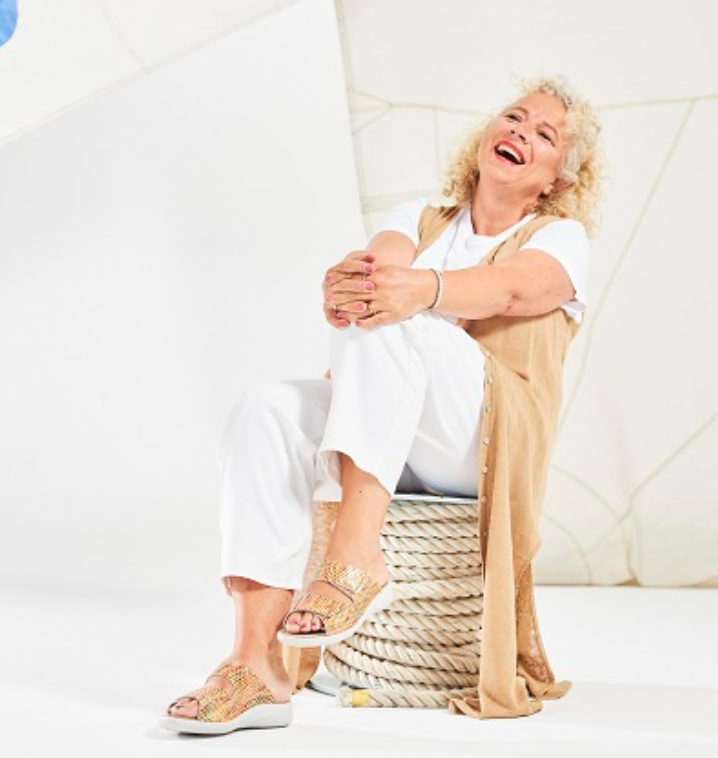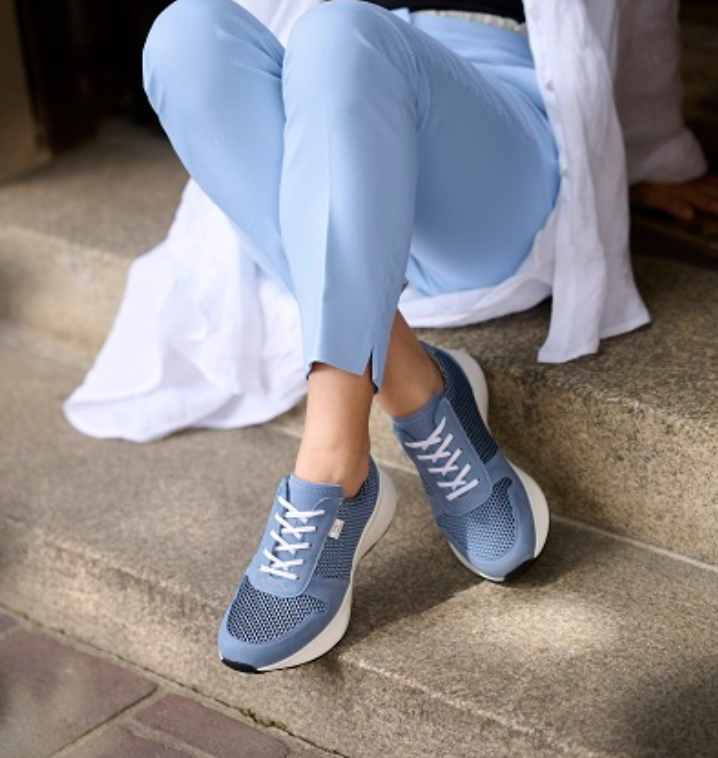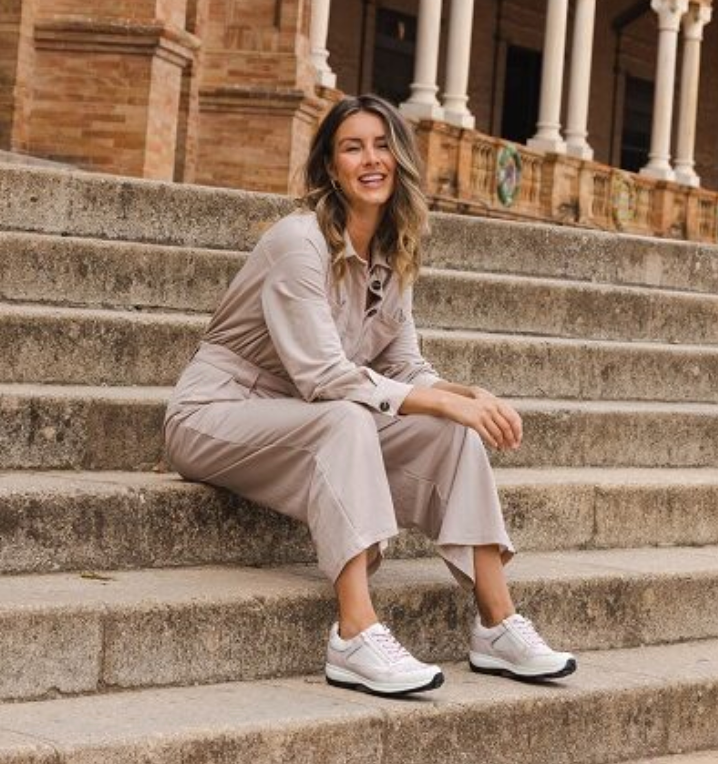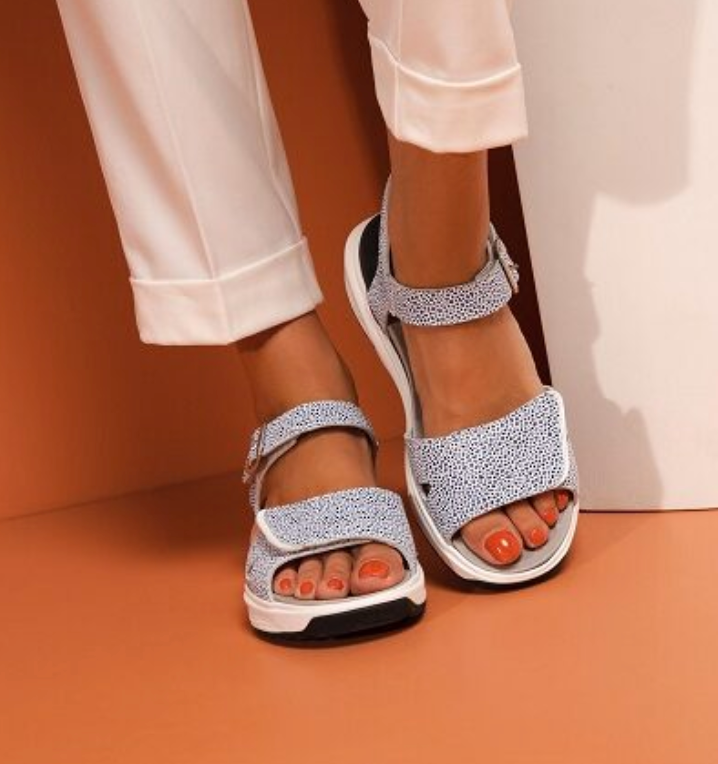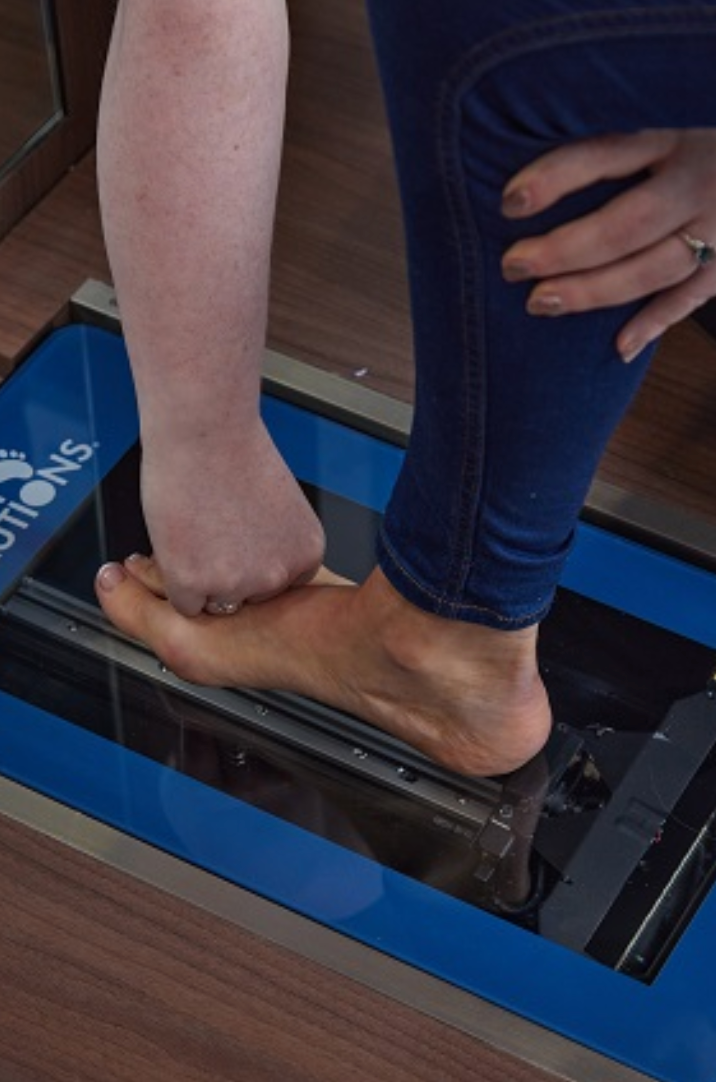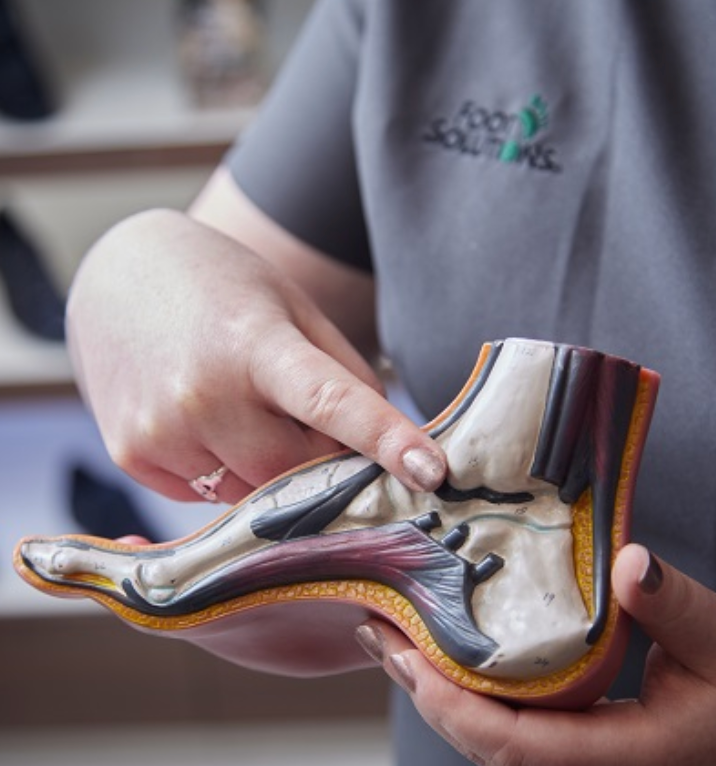Welcome to Foot Solutions Plymouth
Don’t let foot or joint pain hold you back from doing the things you love. Choose high quality footwear and precision tailored orthotics made just for you.
Let us help you.
Book a FREE foot assessment with one of our foot wellness experts in your local store. Using our unique scanning technology, we can map your feet and help you find the perfect fit. We’ll free your feet from pain, improve balance and correct alignment.
Personalised Foot Analysis.
90% of us wear the wrong sized shoes and no two feet are the same. Your unique foot has 26 bones, 33 joints and 119 muscles and ligaments. By scanning your feet, we can evaluate a range of things, including your foot biomechanics and gait pattern, which helps us create custom arch supports and recommend complementary footwear.
Stand up for your Feet.
There is so much waiting to be explored. Whether you’re a person who wants to rediscover pain-free walking, or you are someone who wants to keep your feet in great condition, we have the answer.
Get started today.
We have an extensive range of orthotic friendly shoes
We do the legwork. We travel the world to find the most comfortable and highest quality footwear.
We stock trainers, shoes, boots and sandals that are stylish and contemporary.
The majority of our shoes in our extensive range are orthotic friendly, with prices starting from £140.
From casual wear to dress shoes. For sport, hiking or just everyday wear. The one thing they all have in common is they embody the principles of foot wellness, giving you the right foundation to live a healthy, active life.
The Journey Starts Here.
We make it easy. We have the expertise. All you need to do is take the first step. Find your local store and book a FREE appointment today.
High quality shoes + precision tailored arch supports = the perfect fit

